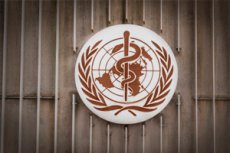
在经历了令人困惑的2020年之后,世界卫生组织终于改变了其对疾病如何通过空气传播的定义。但新的定义是什么?接下来又该如何应对?
发生了什么?
2020年春季,COVID-19(新冠肺炎)开始传播,科学家、医生、公共卫生专家和其他相关人士对此感到困惑。许多人声称这种新型病毒是通过空气传播的,但世界卫生组织(WHO)直到2021年才在COVID-19的语境中使用“空气传播”或“气溶胶传播”等术语。这在当时全世界关于是否佩戴口罩(以及哪种口罩合适)以及室内空间是否会影响病毒传播的争论中产生了影响。
如今,四年过去了,经过专家们两年的辩论,世卫组织改变了对传染性病原体“空气传播”的定义,希望避免疫情第一年出现的混乱和误解,避免阻碍控制病毒传播的努力。
先前的定义是什么?
迄今为止,世卫组织仅将能够以小于5微米的颗粒在空气中移动并感染1米以上距离的病原体定义为空气传播。只有少数病原体,尤其是麻疹和结核病,符合这一定义。世卫组织表示,大多数呼吸道病毒是通过“飞沫传播”传播的,即感染者咳嗽或打喷嚏时产生的飞沫落入他人的眼睛、嘴巴或鼻子。
这些定义对疾病控制具有重要意义。阻止较小颗粒的传播需要隔离室、N95口罩和其他比洗手和保持社交距离更复杂、更昂贵的防护措施。此外,还有一个问题是,哪些措施仅适用于医院,哪些措施也适用于其他场所。
在疫情期间,专家们认为,科学家和工程师们已经证明,世卫组织根据距离和颗粒大小进行分类存在缺陷,传染性可能由多种因素造成,例如可以在短距离内感染人类的颗粒云,以及可以在空气中停留很长时间的较大颗粒。另一些人则认为,短距离传播并不能证明疾病仅通过咳嗽和打喷嚏传播,因为飞沫也可以通过呼吸或说话传播。
世界卫生组织的新定义是什么?
新报告明确将病原体的传播分为通过接触(与人或表面)传播和“空气传播”。
空气传播分为两个子类别:“直接沉积”,即飞沫到达他人口腔、眼睛或鼻腔的黏膜(这基本上是世卫组织先前对空气传播的定义);以及“空气传播或吸入”,即飞沫被吸入。第二个子类别代表了重大变化。关键在于,整个定义与飞沫的大小或距离无关。
这对未来的流行病和大流行病意味着什么?
目前,非洲疾病预防控制中心、中国疾病预防控制中心、欧洲疾病预防控制中心和美国疾病预防控制中心已就新的定义达成一致。然而,这对于未来疫情或全球大流行意味着什么,仍有待观察。
世卫组织的报告并未就这些新定义应该或可能如何影响预防或控制政策提出建议,仅指出,减少传染性呼吸道细小颗粒的传播需要采取“空气传播预防措施”,例如口罩和隔离室。报告称,未能就预防和控制措施达成共识。
顾问小组的成员都有谁?
该咨询小组由约50名科学家、医生和工程师组成。他们试图强调,除了公共卫生专家和医生之外,工程师和生态学家的参与也至关重要。
他们对新定义有何看法?
“我们现在可以使用‘空气传播’这个词与公众沟通了,”美国弗吉尼亚理工大学环境工程师、顾问小组成员林赛·马尔说道。“以前,公共卫生官员避免使用这个词,人们不明白为什么。”她指出,有些措辞仍然“不太恰当”,但重要的是,科学是正确的。
法拉尔表示,关键在于将新的定义建立在清晰的实验数据之上。他指出,尽管人们对流感进行了一百多年的研究,但关于流感是否通过空气传播仍存在争议。“我们了解一些,但还不能确定,”法拉尔说。“这正是我们迫切需要的针对流感的研究。”

